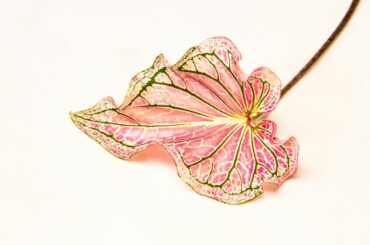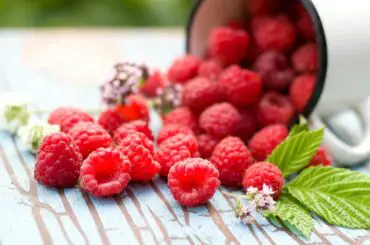Having a healthy passion fruit plant is important for the production of wonderful fruit, but sometimes the leaves can start to turn white. This is a troubling symptom and one that needs to be addressed as soon as possible. Fortunately, there are several causes and solutions that can help your passion fruit plant stay healthy and vibrant.
Passion fruit leaves turning white for several reasons: sunburn, pests, fungus, and viral diseases. The solution for each cause is slightly different, and it’s important to identify the cause in order to apply the correct solution.
Here we will discuss the causes and solutions for passion fruit leaves turning white.
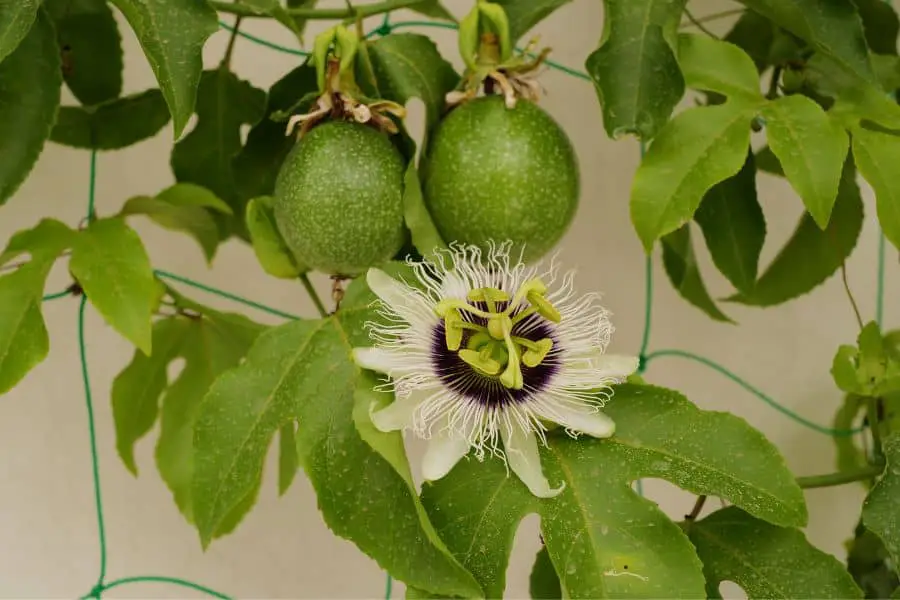
Sunburn
Passion fruits are reasonably hardy plants, but they can be susceptible to sunburn. If the leaves of your plant are exposed to too much sunlight, the result may be white patches on the leaves. This is because the leaves are unable to photosynthesize when exposed to too much sunlight.
This usually happens when you grow the plant in the shade and suddenly move it to a sunnier spot. The leaves may not be able to adjust quickly enough and suffer from sunburn.
Solution
The solution is simple: provide your passion fruit plant with adequate shade. This can be done by moving the plant back to a shaded spot or by providing artificial shade, such as through a canopy or parasol.
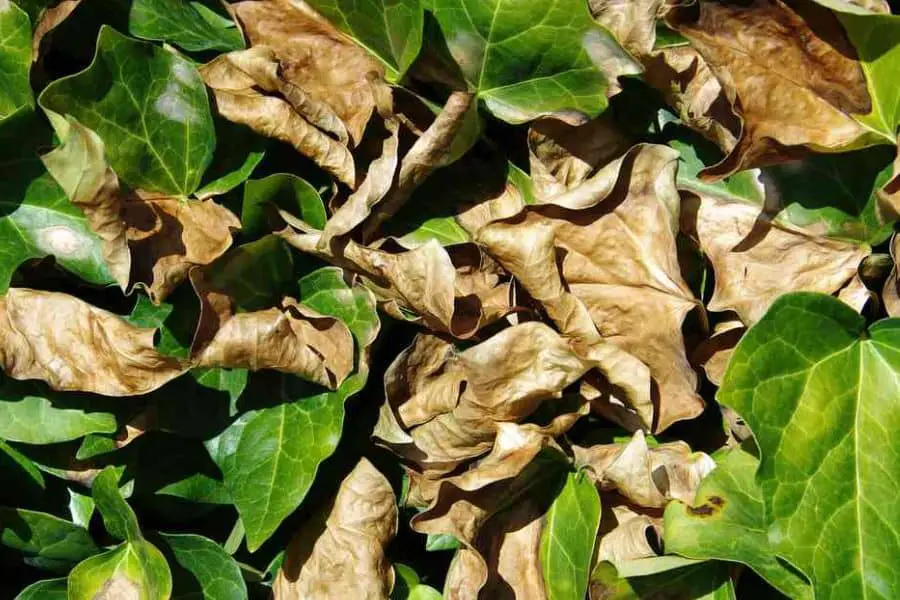
Pests
Pests are another cause of white passion fruit leaves. There are two possible culprits for this.
Spider Mites
Spider mites are a type of arthropod that feeds on the leaves of plants. They cause discoloration, and some mites may also produce white spots. It is hard to see spider mites with the naked eye, but the distinguishing factor is the webbing they leave behind. Further, the passion fruit leaves will have small white spots on them and are usually sticky.
These mites usually infest in dry conditions and are more common in greenhouses, where the environment is more controlled. When left unchecked, spider mites can severely damage the leaves of a passion fruit plant and even cause them to drop off. In the worst cases, the plant may even die.
Solution
The first step should be to get rid of the spider mites as soon as possible. First, remove the passion fruit leaves that are heavily infested. You can also use dissolved alcohol to kill visible mites on the plant. To do this, mix 1 cup of alcohol with 30 ounces of water and spray the solution onto the plant with a spray bottle. Then wipe the leaves with a paper towel.
You can also spray the passion fruit plant with insecticidal soap or neem oil to kill the mites. After eliminating the infestation, provide your plant with adequate water and humidity to prevent further infestations.
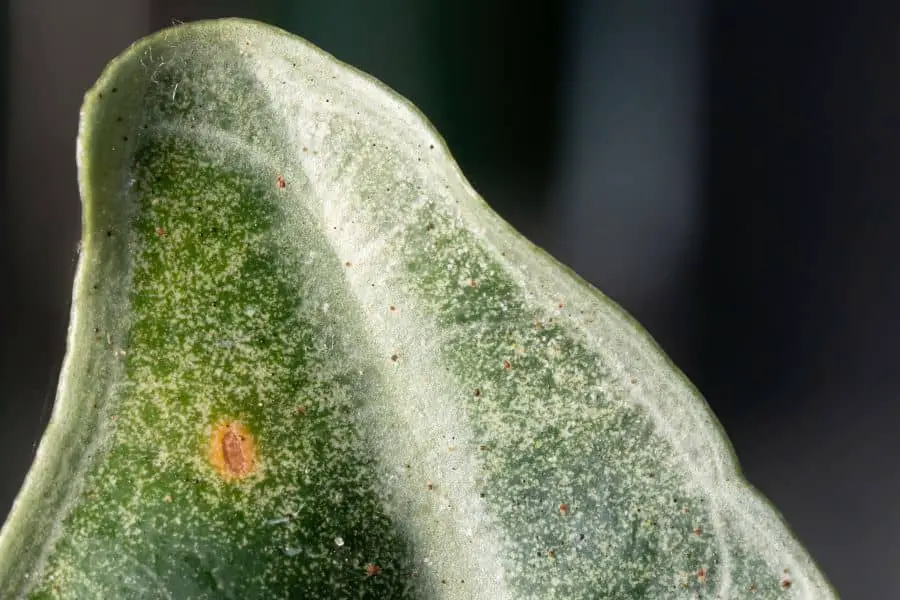
Passion vine Hopper
The passion vine hopper is a small insect that feeds on the leaves of the passion fruit plant. The eggs of the passion vine hopper are laid in small clusters on the underside of the leaves of the passion fruit plant. The eggs hatch into white-colored nymphs, which feed on the leaves of the plant. As they feed, the leaves may become discolored and develop white spots. The nymphs mature into adults, which lay more eggs on the leaves of the plant.
Solution
The eggs of the hopper can be destroyed by cutting off all the stems and leaves with egg scars and tufts and then burying or destroying them. Alternatively, small bundles of plants with eggs can be provided for the adults to lay their eggs on and then collected after egg-laying has finished.
You can also increase the population of egg parasitoids, which helps control the population of passion vine hoppers. Egg parasitoids are tiny parasites that lay their eggs inside the eggs of other insects. When the eggs hatch, the larvae eat their way out of the host egg, killing it in the process.
However, the easiest way to get rid of passion vine hoppers is to spray the plant with an insecticide. Be sure to read and follow the instructions carefully when using any pesticide.
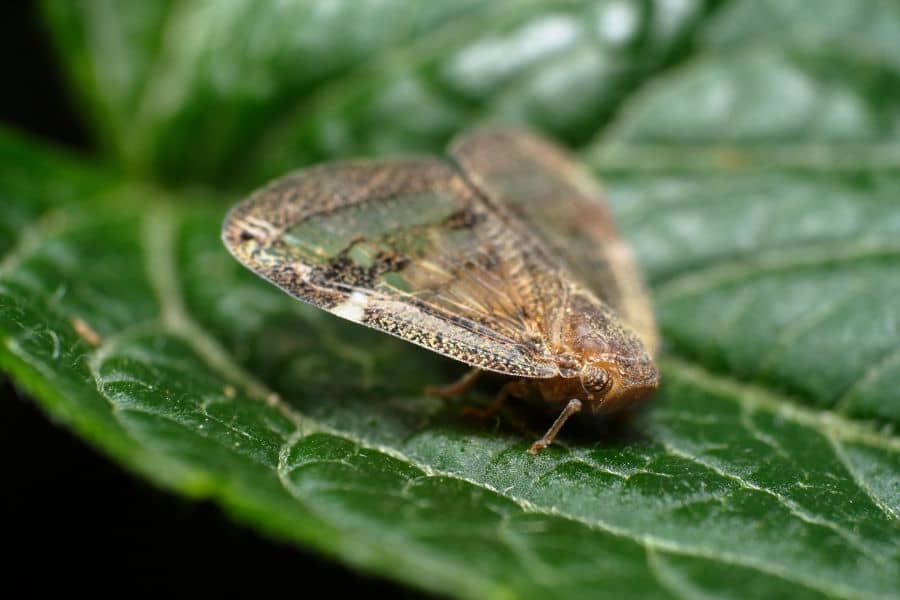
Fungus
Fungal infections are another cause of white passion fruit leaves. There are two possible fungi that can turn the leaves white.
Septoria Spot
Septoria spot is caused by the fungus Septoria passiflora, and it causes circular spots with pale yellow, white, or gray centers and dark brown margins. The spots may merge to form large white areas on the leaves, which eventually die off. The fungus thrives in cool, moist conditions, and there are no chemical treatments that can control it.
Solution
Finally, make sure to practice crop rotation every few years in order to reduce the risk of re-infection.
The best way to prevent septoria spots is to keep the garden clean and free of debris. If a passion fruit plant is infected with Septoria spot, it should be removed from the garden and destroyed as soon as possible to prevent further spread. Additionally, planting resistant varieties of passion fruit can help reduce the chances of infection.
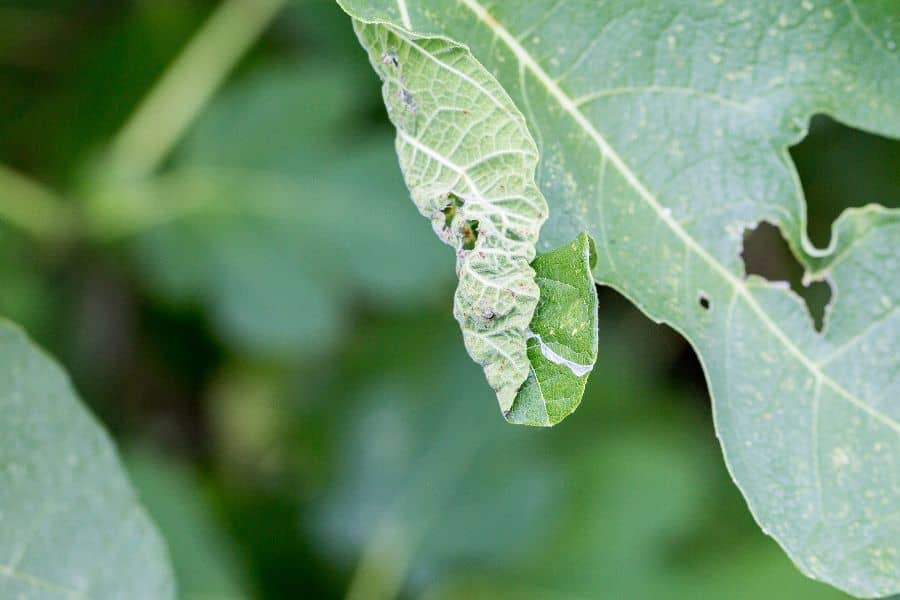
Scab
Scab is a fungal disease caused by the fungus Cladosporium oxysporum. It affects the leaves, stems, and fruits of passion fruit, causing small translucent to white spots that eventually turn brown to black. The spots can become cracked, and the fruits may be covered in a corky layer. The leaves may also become deformed and weakened, making the plant more vulnerable to other diseases.
Solution
The best way to prevent scabs is to practice good garden hygiene. Remove any fallen leaves or debris, and make sure the plants are well-ventilated. Keep the area free from weeds and debris, as these can act as reservoirs for the fungus. Additionally, use disease-resistant varieties and avoid overhead irrigation if possible. If you notice signs of infection, apply a fungicide or compost tea to the affected areas. Keep an eye on the plant and, if necessary, destroy any infected parts. With these prevention measures, you should be able to keep your passion fruit plants healthy and free from scabs.
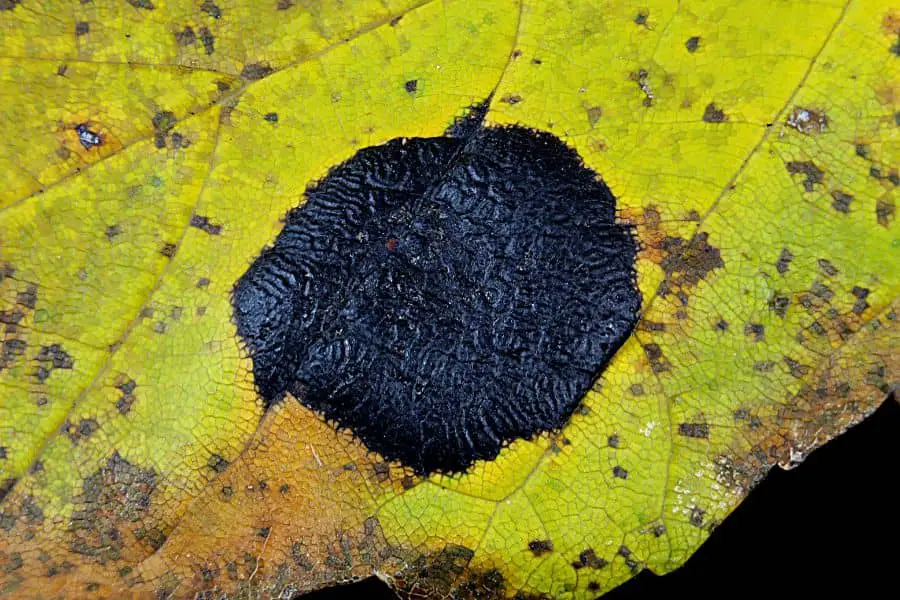
Powdery Mildew
Powdery mildew is a prevalent fungal disease that typically affects cucumber plants, beans, and other vegetation during the summertime. Powdery mildew, unlike most fungi, does not require excessive moisture to grow and is frequently found in mid- to late-summer when the climate is dryer. At first, the disease presents itself as small white spots on the leaves. If left unchecked, it will quickly spread and consume the entire leaf, top and bottom. In severe cases, the leaves will turn brown and die. Powdery mildew mostly affects plants by hindering their growth or causing sunburn due to a lack of leaves. Although mold rarely kills the plant, it can still reduce its productivity.
Solution
Powdery mildew can be a big issue for passion fruit plants, particularly in shady, humid areas with poor air circulation. The best way to prevent powdery mildew is to provide good air circulation (by providing support for climbing varieties and removing infected leaves). You can also clean up the beds in the fall to remove any overwintering spores and make sure the plants are well fed and watered. Some passion fruit varieties are resistant to powdery mildew, so you can try using those if you have problems with the infection. If it does occur, you can spray affected leaves with compost tea or diluted urine (4 parts water) or use a fungicide.
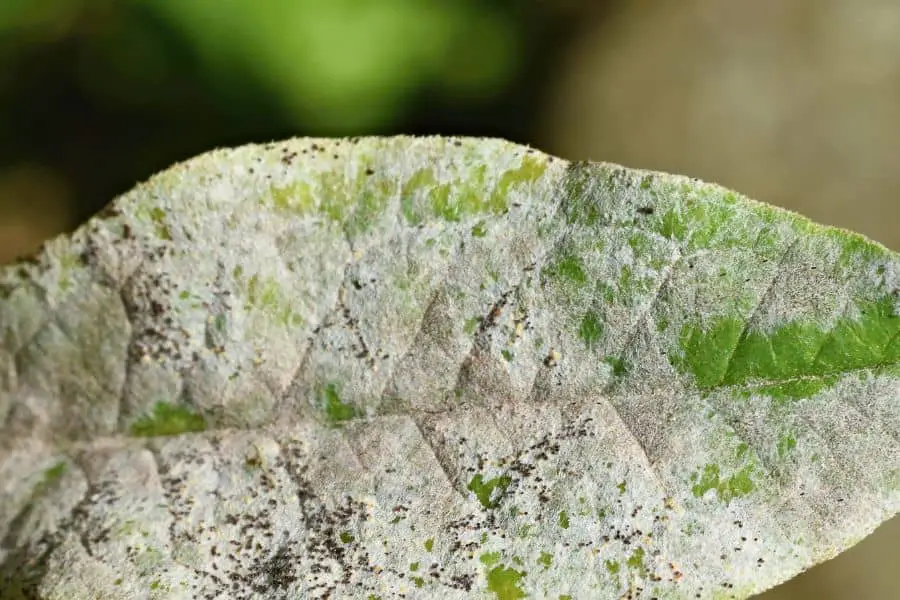
Viral Disease
The disease can also cause white spots on passion vine leaves. While there are several viral diseases, two of them are prevalent in several countries.
East Asian Passiflora Virus
East Asian Passiflora Virus (EAPV) is a potyvirus that is most commonly found in Japan, Taiwan, and Peninsular Malaysia. It causes severe mosaic symptoms on leaves as well as severely malformed and woody fruits. Sometimes the leaves will also turn white. The virus is believed to spread through the artificial movement of infected plants or by aphid vectors. There is currently no known cure for EAPV, so infected plants should be destroyed in order to prevent the virus from spreading.
Solution
As mentioned above, you cannot revive the plant once it is infected. The only solution is to destroy the infected plant to prevent the spread of the disease. Additionally, you can make your garden pest- and insect-free so that aphids cannot carry the disease. There are also disease-resistant passion fruit varieties that can grow well even with the disease around.
Passion Fruit Woodiness Virus
Passion Fruit Woodiness Virus (PFWV) is a common virus found in tropical regions. It causes severe fruit woodiness, white, yellow, and brown spots on leaves, and yellowish-green mottling of fruit skin. The virus is transmitted by whiteflies, mealybugs, and other aphids. It can also spread rapidly through infected cuttings and grafts. Unfortunately, there is no known cure for PFWV, so it’s important to take preventive measures in order to prevent its spread.
Solution
The best way to protect passion fruit plants from PFWV is to keep the garden clean and free of pests like whiteflies, mealybugs, and aphids. Additionally, use disease-resistant varieties and only use healthy cuttings and grafts for propagation. If you do notice signs of infection, destroy the affected plants as soon as possible to minimize the spread of the disease. Finally, provide good air circulation and plenty of sunlight to keep the garden healthy and reduce the risk of infection. Good nutrition is also important, as this will help the plants fight off any infections. Keeping your garden clean and free of pests, using disease-resistant varieties, and providing good air circulation and nutrition are all important elements in preventing the spread of this virus.
Final Words on Passion fruit leaves turning white
While passion fruit can be a very rewarding addition to any garden, it is important to remember that it can fall prey to various plant diseases. Fortunately, there are ways to prevent most of these diseases and even treat them if they do occur. By practicing proper garden hygiene, using disease-resistant varieties, and providing good air circulation and nutrition, you can reduce the risk of disease and keep your passion fruit plants healthy. Taking these preventive measures can help ensure that you will be able to enjoy a successful harvest of delicious passion fruit.
Read Next : Forgot To Prune Raspberries ( No Need To Panic )
Read Next : Zucchini Leaves Turning Brown ( 7 Reasons + Solutions)
Read Next : Do Mice Eat Basil Plants? ( Better Explanation )


